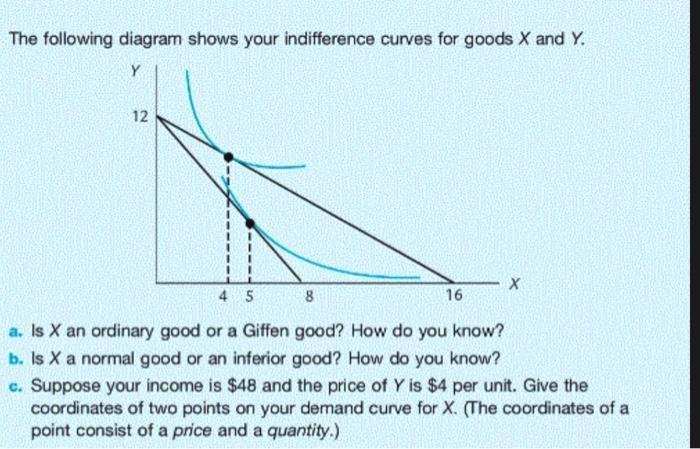Answered step by step
Verified Expert Solution
Question
1 Approved Answer
Changes in the consumer's opportunities lead to changes in the optimal consump- tion basket. Changes in opportunities arise from changes in income and changes


Changes in the consumer's opportunities lead to changes in the optimal consump- tion basket. Changes in opportunities arise from changes in income and changes in prices. A change in income causes a parallel shift in the budget line. When income rises, consumption of the good X can either rise (in which case X is called a normal good) or fall (in which case X is called an inferior good). If we fix the prices of goods X and Y, we can draw budget lines corresponding to various levels of income. If we also know the consumer's indifference curves, we can find the optimal basket corresponding to each level of income and read off the quan- tity of X associated with each level of income. We can plot this information on a graph, with income on the horizontal axis and quantity of X on the vertical. The resulting curve is called an Engel curve. The Engel curve slopes upward for a normal good and downward for an inferior good. A change in the price of X causes the budget line to pivot around its Y-intercept-outward for a fall in price and inward for a rise in price. A rise in price can cause the quantity of X demanded to fall (in which case X is called an ordinary good) or rise (in which case X is called a Giffen good). If we fix the price of Y and the consumer's income, we can draw budget lines cor- responding to various prices of X. If we also know the consumer's indifference curves, we can find the optimal basket associated with each price of X and read off the quantity of X associated with each price. We can plot this information on a graph, with price on the vertical axis and quantity on the horizontal. The resulting curve is the demand curve for X. The demand curve slopes downward if X is not Giffen and upward if X is Giffen. When the price of X goes up, the consumer changes his consumption of X for two reasons. First, there is the substitution effect: Consumers will not purchase goods whose marginal value is below the price. Second, there is the income effect: Consumers are made effectively poorer when a price goes up. The substitution effect always reduces consumption of X. The income effect reduces consumption of X if X is a normal good, but increases consumption of X if X is an inferior good. For a normal good, the substitution and income effects work in the same direc- tion, ensuring that when the price goes up the quantity demanded goes down. Thus, a normal good cannot be Giffen. For an inferior good, the substitution and income effects work in opposite directions: If the substitution effect is greater, the good is not Giffen, but if the income effect is greater, the good is Giffen. The compensated demand curve shows, for each price, the quantity of X the consumer would demand if he were income-compensated for every price change. Thus, the compensated demand curve shows only the substitution effect and so must slope downward.
Step by Step Solution
★★★★★
3.41 Rating (145 Votes )
There are 3 Steps involved in it
Step: 1
ANSWER a To determine whether X is an ordinary good or a Giffen good we need to examine how the dema...
Get Instant Access to Expert-Tailored Solutions
See step-by-step solutions with expert insights and AI powered tools for academic success
Step: 2

Step: 3

Ace Your Homework with AI
Get the answers you need in no time with our AI-driven, step-by-step assistance
Get Started


